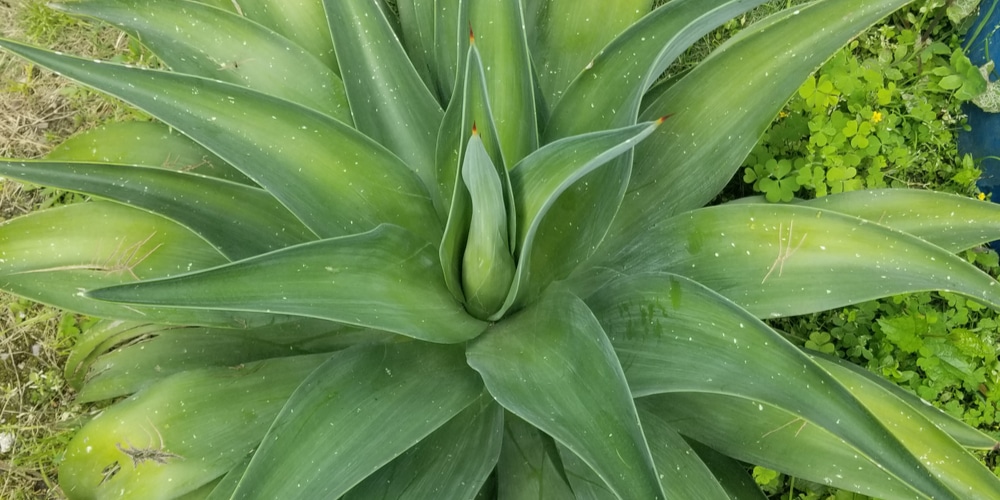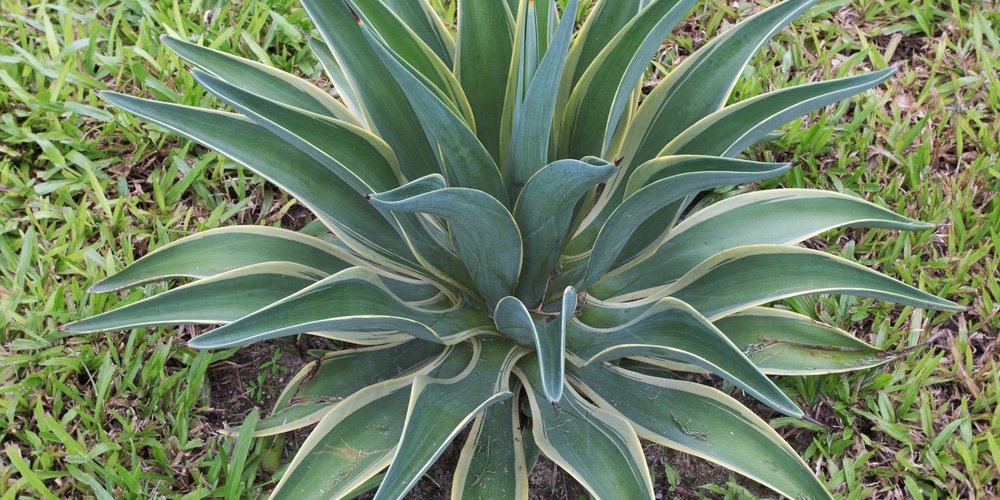Dwarf century plants are a type of succulent that is native to Mexico. They can be identified by their dark bluish-green leaves that grow in a rosette pattern. These plants typically reach a height of between 2 to 3 feet tall, making them an excellent choice for small gardens or indoor containers. Let’s look at how to grow and care for a dwarf century plant.
What is a dwarf century plant?
Dwarf century plants have the botanical name Agave desmettiana ‘Variegata’ and are part of the Agave family. The name comes from the fact that each plant will only produce flowers once in its lifetime and then die. The plants are long living and can grow for 100 years. In actuality, the plant can grow to flower in 8 to 10 years.
Dwarf century plants have a rosette pattern to their leaves, with the center leaves being smaller than those on the outside. They are commonly called a few different names such as Variegated Smooth Agave, Maguey, Dwarf Variegated Agave, and Golden Moments.
Dwarf Century Plant Growth and Care

Dwarf century plants are easy to care for as long as you get the basics right. Here are some tips to help you grow a thriving dwarf century plant.
Watering requirements
These plants are drought-tolerant, so they don’t need a lot of water. In fact, you should only water them when the soil feels dry to the touch.
Sunlight needs
These succulents do well in full sun or partial shade. When grown indoors, you can place the plant on a sunny windowsill.
Fertilization
Fertilize your dwarf century plant at the beginning of the growing season with a slow-release balanced fertilizer.
Soil requirements
Dwarf century plants are succulents that need well-draining soil. You can use a cacti and succulent pre-mix or add perlite and sand to regular potting soil to get the desired texture.
Temperature requirements
These plants can survive in temperatures between 60°F to 90°F. They thrive in warmer climates and can be grown outdoors in USDA zones 9b to 11.
Repotting
Dwarf century plants are slow-growing, so you should only need to repot them every 3 to 5 years. When you decide to repot your plant, make sure that the soil is dry and then use a sharp knife to cut away the dead roots and any rotted or diseased tissue before replanting.
As you can see, growing a dwarf century plant is not too difficult. You should keep an eye on these plants in the winter because they are susceptible to cold temperatures. To prevent your plant from dying back to its roots during colder months, move it to a warmer location when the temperature drops below 45°F. If the damage has already been done; you can help your plant by covering it with a blanket or tarp.
Dwarf Century Plant Growth and Care: Conclusion
Dwarf century plants are a great option for gardeners who want an easy-to-care-for succulent. With just a little bit of TLC, your plant is sure to grow and flourish within a few years. These plants are also perfect for people with smaller yards as they are a miniature version of the century plant, which grows very tall and take up a lot more space.
